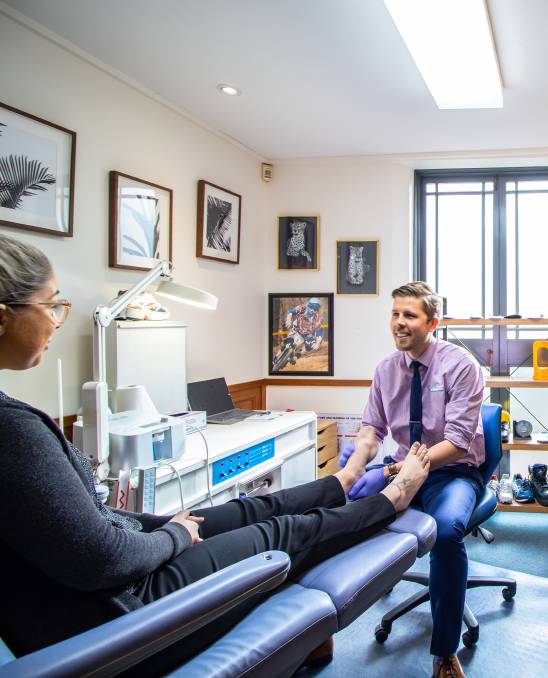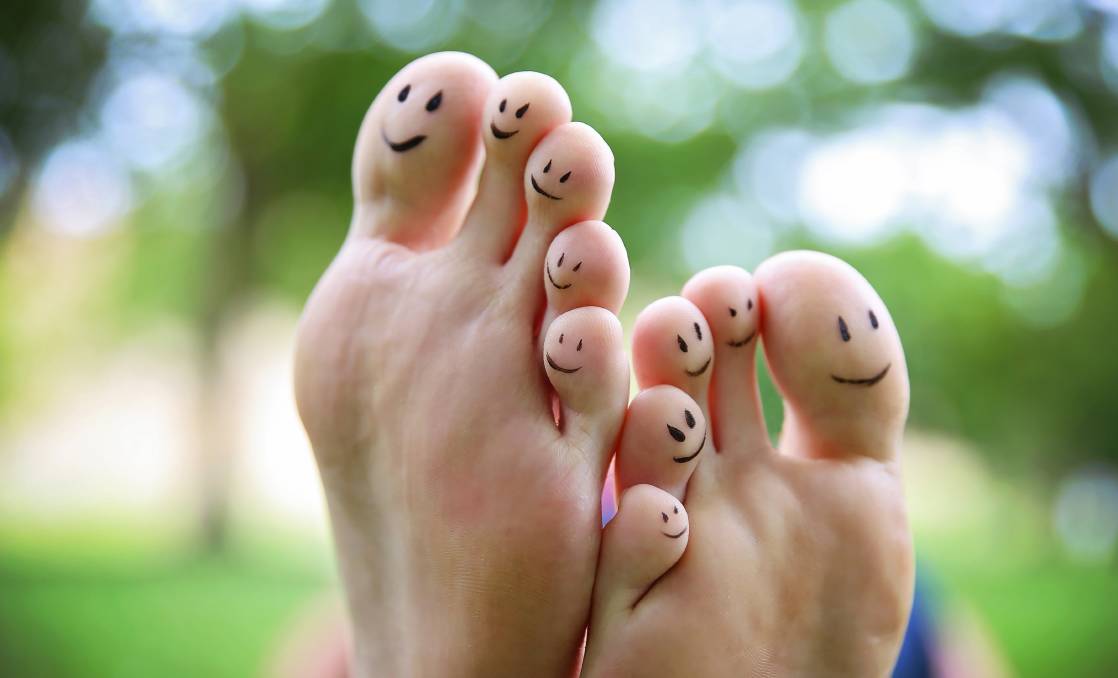
Stepping up: Podiatrist Ricky Lee ensures his patients are looking after their feet and maintaining good foot health practices.
Your feet underpin your entire well being and are mirrors of your health.
They have the capability to influence and affect your entire body.
With so many factors dependent on your feet, such as your mobility, independence, physical activity, work, income and general health, it’s important to take good care of them.
Maintaining good foot health and seeking early diagnosis and treatment for foot issues through podiatric care can lead to better health outcomes and reduce the impact of non-communicable diseases, like diabetes or heart disease.
Foot Health Week is from October 14 – 20 and aims to promote general foot health and encourage better health outcomes for all Australians.
This year, Australians are encouraged to ‘Stand Up for your Health’ by knowing where your feet fit in.
Ricky Lee is a registered Podiatrist and a director with the Australian Podiatry Association.
“As podiatrists, we manage and treat in all concerns of the lower limb from assessing children as they start walking and developing, through to sport people with knee or foot injuries who are training for their next marathon, to diabetic foot management and general foot care such as ingrown toenails, corns and calluses,” he said.
Here are Ricky’s top foot health tips:
KEEP NAILS HEALTHY
A very common thing podiatrists see on a daily basis is fungal nail infections.
To avoid them, frequently wash and dry your feet, avoid going barefoot in public showers or pool areas, wash socks frequently and hang inside out and don’t share footwear.
Ricky suggested adding a drop of tea tree oil into your moisturiser, add a few drops to your washing and make up a diluted spray for your feet to help reduce the risk of fungal infection.
CORRECT SHOES
Up to twice your body weight in force is applied through your feet and legs with every step, so it’s important to have comfortable and appropriate footwear.
“We commonly see that people wear shoes that are too small for them, so make sure that there is about 1.5 centimetres (thumb width) of space between your longest toe, which may not be your big toe, and the end of the shoe,” said Ricky.

Foot hold: Foot Health Week encourages Australians to know where their feet fit in to their general health care.
The amount of weight a person carries impacts the pressure on their feet and through pregnancy your weight will increase very quickly.
“Seeing a podiatrist during this time means you’ll get the right diagnosis and treatment plan to reduce impact on your feet, ankles and knees.”
As you age, you can lose cushioning and soft tissue fat in the pads of your heels and balls of your feet near your toes.
Bone deformities, such as bunions or arthritis, and difficulties undertaking basic foot care can lead to foot health issues and sometimes an increased risk of falls.
Most foot problems can be improved by regular maintenance and care, keeping weight down, shoe modification and use of cushioned insoles.
It is very important not to ignore what your feet and legs are telling you.
One of the most common serious foot conditions in Australia is Plantar Fasciitis, which is noticeable through a deep ache or shooting pain in the heel. Tired feeling legs is another common complaint podiatrist’s see.
Feet are often the first place to show diabetic-related symptoms. This is why it is so important to pay attention to any such changes in your feet if you have diabetes.
“If you have cold feet, numbness, a sharp pain in your leg after walking, pins and needles, swelling, any changes in foot colour, such as redder skin, or your skin starts to breakdown via a cracks, seek urgent care,” Ricky said.
